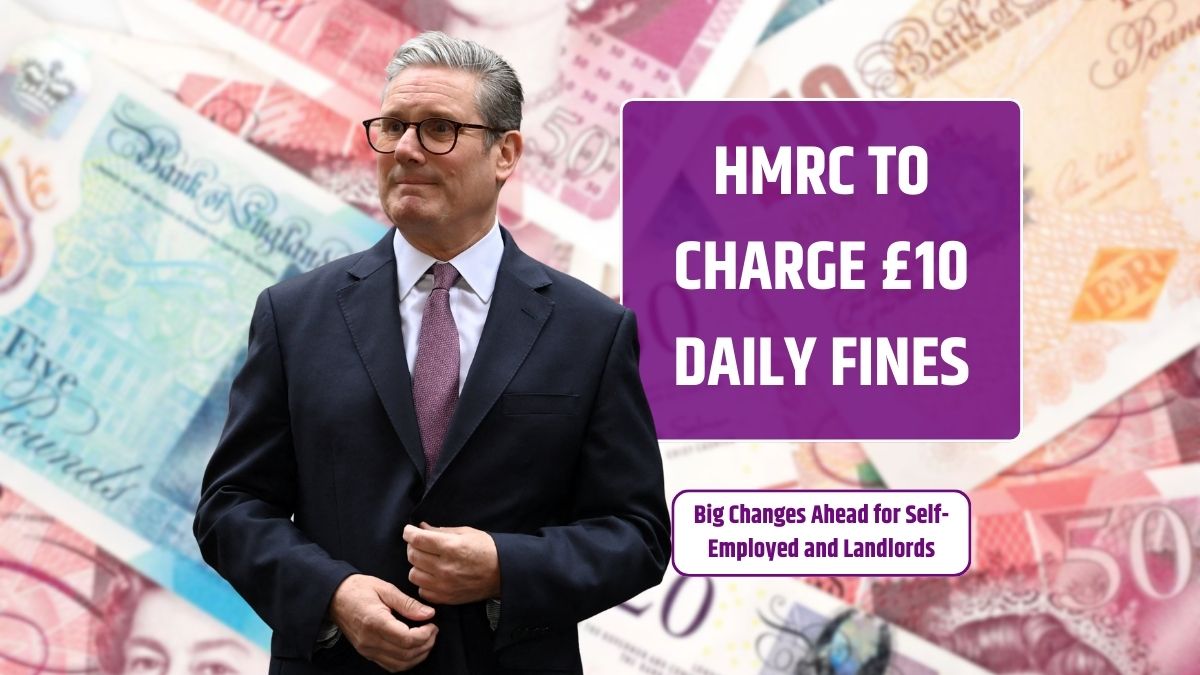HMRC is cracking down—and if you’re self-employed or a landlord earning over £50,000, you could soon face daily £10 fines if you ignore the new rules under Making Tax Digital (MTD). From April 2026, digital tax reporting becomes mandatory, and the penalties for missing deadlines are nothing short of painful.
Table of Contents
Deadline
Let’s cut to the chase. Starting 6 April 2026, anyone self-employed or renting out property and earning above £50,000 must switch to digital record-keeping. The new system requires quarterly updates to HMRC, meaning tax won’t just be a once-a-year task anymore.
The first deadline is 7 August 2026, covering your income and expenses from 6 April to 5 July. Miss that? You’re immediately hit with a £100 fine. Let it slide for three months, and here’s where things really escalate.
Fines
After three months of missing your quarterly update, HMRC will start charging a £10 daily penalty. Yes—every single day. These fines can keep stacking up until they reach £900. But it doesn’t stop there.
Here’s a breakdown of the full penalty timeline:
| Time After Missed Deadline | Penalty |
|---|---|
| Immediately | £100 fine |
| After 3 months | £10 per day (up to 90 days = £900) |
| After 6 months | £300 or 5% of unpaid tax (whichever is higher) |
| After 12 months | Another £300 or 5% of unpaid tax |
| Deliberate delay | Higher fines and possible further penalties |
So if you’re thinking of skipping that update—or waiting till January like usual—you could end up hundreds, if not thousands, of pounds out of pocket.
Payments
It’s not just about filing, either. Paying your tax late comes with its own painful price. HMRC will charge you 5% of your unpaid tax after one month, then slap another 5% at six months, and again at the 12-month mark. That’s on top of the interest that starts ticking the moment your payment is overdue.
Falling behind could drain your finances quickly, especially with the added stress of interest and fines compounding every few months.
Reporting
So, what exactly are you supposed to submit under MTD for Income Tax (also called MTD for IT)? There are two main parts:
- Quarterly Updates – These include all your business income and expenses. You’ll submit one every three months.
- Final Declaration – This is like your annual tax return. It includes all your other income—like savings, dividends, or investments.
The quarterly reports are cumulative. That means if you forget something in April, you can correct it in the next one. But still—accuracy from the start saves time and stress later.
Software
One of the biggest changes? You won’t be able to scribble your numbers on a spreadsheet or submit paper forms. You’ll need HMRC-approved accounting software that lets you log everything digitally and send it straight to them.
If you’re not already using compatible software, now’s the time to start getting familiar. Because once April 2026 rolls around, the last-minute rush isn’t going to cut it anymore. Miss a date, and the fines will follow.
Warning
These rules might seem far off, but they’re coming fast. And the penalties are built to push people into compliance. Waiting until the last minute could cost you more than just stress—it could cost you thousands.
Now’s the time to change your habits. Go digital, learn the rules, and stay on top of your updates. That way, you won’t be waking up to a £10 fine every day.

